Number 36
- Toxic clouds of capitalism
- Envisioning a post-Western world
- On the knife’s edge
- Anarchy in Hamburg
- Anarchy in London
- Blocking the arms fair
- Acorninfo
On Sunday August 27 crowds of people enjoying a day on the beach at Birling Gap near Eastbourne, East Sussex, suddenly started coughing and spluttering, and rubbing their eyes, before fleeing the coast en masse.
They had fallen victim to a cloud of chemical gas, later identified as chlorine, which had drifted onto the southern English coast from the Channel. Some 150 people were treated in hospital in what was described by emergency services as “a major incident“.
The mainstream media reaction to this nightmarish episode was predictably understated and narrow, restricting itself to speculation as to where the poison gas may have specifically come from – Rotterdam, maybe, or northern France, or a ship in the Channel, or an old wreck.
With the honourable exception of the local Friends of the Earth, nobody was interested in the bigger picture.
Meanwhile, in the USA, Hurricane Harvey resulted in Houston’s petrochemical industry leaking thousands of tons of pollutants, with communities living near plants damaged by the storm exposed to soaring levels of toxic fumes and potential water contamination.
The plain truth about both instances of environmental poisoning is, of course, that they are products of the industrial capitalist system.
This is the same system which, as revealed by a new report, has produced 8.3bn tonnes of plastic since the 1950s, polluting the world’s continents and oceans and threatening a “near permanent contamination of the natural environment”.
This is the same system which has destroyed 80 per cent of the Earth’s natural forests, which is wiping out our fellow species by dozens every single day, with as many as 30 to 50 per cent of all species heading towards extinction by 2050.
And if we are looking for a way of ensuring that incidents like the ones at Eastbourne and Houston never happen again, if we want to avoid all the pollution and extinction, the only meaningful approach is to work for the dismantling or destruction of the industrial system.
Why is this so hard for so many people to understand or to accept? Why, even among radical critics of capitalist society, is there so much reluctance to contemplate the loss of its toxic infrastructures?
People often talk about their attachment to the “little luxuries” in life that come hand in hand with industrialism. But is the ability to watch videos or play electronic games at any time and any place they fancy really more important than the ability to sit in the open air without being assaulted by drifting clouds of chemicals?
Is the personal convenience provided by a washing machine or a car really so important that future generations might not be able to walk outside without an oxygen mask?
Are all the temporary, shallow, egotistic pleasures of modern Western existence really worth more than the continuing organic well-being of our precious world?
Clearly not – and so why does this realisation not translate into a political perspective that embraces the end of the industrial capitalist era as an overwhelming priority for us all?
2. Envisioning a post-Western world
This is an extract from a full-length article of the same name by Rob los Ricos and Paul Cudenec, which can be found here.
The West’s current incarnation as Industrial Capitalism poses a severe and unprecedented threat to the health and wellbeing of the living planet in general and the human species in particular.
The very basis of this system is the so-called need for permanent “economic growth”, involving a theoretically endless increase in the exploitation of people and nature that, logically, can only end in disaster.
This system justifies and defends itself by means of a mesh of oppressive constructs such as “property”, “law” and “nation”, which today largely go unchallenged, even by critics of capitalism’s worse excesses.
General acceptance of these constructs serves to camouflage and legitimize the violence used by the system to impose its control. It thereby helps to criminalize any resistance to this oppressive violence.
In the Mexican revolution of the early part of the 20th century, the Zapatistas had a slogan: “It is better to die on your feet than to live on your knees.”
In the West, the pervasive attitude is currently one of ignorance, fear, and slothful privilege, wherein the suffering caused by Western institutions in far-off lands is not of consequence to the people who are causing it through an unquenchable lust for cheap consumer goods.
Few of the beneficiaries are even aware it is happening, and most wouldn’t care if they knew. If told that wireless technology is causing genocide in central Africa, most Western consumers would likely reply “I like my cell phone.” Or their X-box, or their internet-connected refrigerator.
Western consumers have decided that it is – indeed! – much better to live in ignorance and servitude to corporatized, military police states, and to hell with the consequences, rather than do anything to stop campaigns of genocide beyond their field of vision. The products of privilege produced in the process are precious to them, not human lives, or a living planet.
If the society produced in Europe through centuries of bloody violence and subsequently unleashed to ravage the entire planet can be thought of as “civilization,” an intelligent human being can only conclude that this civilization is something which must be eradicated so thoroughly as to never again be obtainable.
If this does not happen, and soon, our planet will become uninhabitable, and life as we know it no longer possible. Something new will evolve in the toxic, ruined wastelands the West creates everywhere. It will not likely be compatible with living things that have been predominant for the past few million years.
When our comrades over at Antidote Zine decided to repost the full text of Envisioning a Post-Western World (see above), they did so with the following introduction:
“In light of recent discussions among antifascists (including here within the Antidote Writers Collective) about an esoteric but significant kind of red-brown convergence—the potential for fascist counter-recruiting on the more nihilistic, misanthropic fringes of deep green, Euro-pagan, and Malthusian eco-anarchist groups—we recognize that some of the arguments put forward in the article that follows are right on the knife’s edge.
“We present them nonetheless for two reasons: firstly, of course, these ideas are out there whether we like it or not and warrant critical attention; and second, if spaces—both physical and ideological—are vulnerable to fascist counter-recruiting, this implies an overlap where antifascist counter-recruiting could (and should) be happening as well. In other words (indeed the words of Magpie Killjoy elsewhere in these pages), it behooves people in contested cultural terrain to, well, contest it.”
It was a little odd to have cited nihilism regarding an article which specifically declares that “our desire for the destruction of the current system is not nihilistic in motivation, but is born of a yearning for another way of living”.
Likewise, neither of the two authors of the original piece sees any misanthropy, Malthusianism or specifically “Euro-” paganism in their joint article.
The problem seems to be that anarchists today are forever looking over their shoulders to see if they are being watched by what is essentially an internal Thought Police, self-appointed custodians of a flattened-out and narrowed-in version of anarchism.
Seemingly born in the cloisters of Academia, this strange hybrid of ultra-liberalism and reformist post-Marxism is more interested in language than reality. It delights in over-complicating issues, in spreading the notion that cynical sophistication is superior to passionate simplicity. It very much dislikes any clear or direct physical or intellectual confrontation with the current order.
It is a fairly fluid entity, which varies in emphasis from context to context. But we can say that it generally does not approve of opposing US imperialism, of defending Palestinian rights, of protesting against capitalist summits, of Black Bloc tactics, of exposing the covert machinations of the military industrial complex, of talking about the “one per cent” or the “banksters”, of challenging the capitalist cult of technology, of using any kind of “populist” language that might actually inspire people to take to the streets in rebellion.
For instance, a reflection on the protests against the G20 in Hamburg in July, written by the “Gruppe Internationaler SozialistInnen” and reproduced in translation on the Libcom website, pours scorn on anti-capitalist enthusiasm around riots which broke out in the city’s Schanzenviertel during the mobilisation (see below).
It drones on boringly about “the intellectual failure of the so-called ‘autonomists’ to even begin to distinguish between the simple breaking of glass and the expropriation and socialisation of the means of production and consumption through the action of the proletarianised”.

It also complains: “The riots may have been ignited by anger over the police, but they quickly took on the dynamic of a content-free event-riot, participated in by party-goers, unpolitical youth and, according to rumours which must be taken seriously, even Nazi hooligans.”
This last little snipe is interesting, as it is a common feature of these kinds of critiques that they usually claim that out-and-out anti-capitalism represents some kind of “slippery slope” towards a new kind of fascism, or the famous and yet elusive “red-brown convergence” referred to by Antidote.
In France, these techniques have been used by “journalist” Ornella Guyet on her (happily now defunct) site confusionnisme.info to lump together everyone from environmentalists of the décroissance movement to Nuit Debout, Noam Chomsky and Jeremy Corbyn as “confusionist”, anti-semitic or somehow otherwise dangerously close to a mystifyingly broad redefinition of “fascism”.
Exposing her activities, the left-wing website Le Grand Soir concludes that she is “an opportunist in thrall to the neocolonial and ultra-liberal system”. It adds: “Ornella Guyet claims to be ‘left-wing’, but her work proves the opposite.” It says she uses the cover of anti-fascism to attack genuine opponents of the capitalist system. “In this sense she is the perfect example of the Fake Antifa, a guard dog of power”.
The UK has its own fake leftists in the Ornella Guyet mould, as discussed in Acorn 19. In that article we concluded that there seemed to be “a network of journalists and academics actively working to steer the ‘Left’ away from any criticism of the USA and the capitalist system it dominates”.
The influence of this Fake Left is such that genuine anarchists and anti-capitalists are now self-censoring to avoid falling victim to their ideological smear campaigns.
We are edging towards a situation where the only “acceptable” form of opposition to the system is irrelevantly academic and reformist.
A pedantic and humourless ideological puritanism, masquerading as radicalism, limits itself to calling for the system to be made fairer, more inclusive or more democratic and is suspicious of anyone who dares to challenge the fundamental assumptions of power.
Apparently forgotten is the urgent and inspiring anarchist demand for capitalism to be wiped from history to pave the way for a completely different way of living.
If drawing attention to this means we are regarded in some quarters as being on the “knife’s edge” of acceptability, then so be it.
As our friends at Antidote point out, “it behooves people in contested cultural terrain to, well, contest it”.
As we predicted (in Acorns 29 and 35), the protests against the G20 in Hamburg in July were powerful and significant, both in terms of anti-capitalist resistance and in terms of the kind of repressive policing we are likely to be facing in the rebellious years ahead.
A very full and excellent English-language report was posted by our US comrades at Crimethinc and rather than producing our own inferior version, we thought we’d just copy and paste a few sections of their long article to give our readers a taste of what went on. The Crimethinc report and analysis can be seen in full here.
State violence and popular resistance
The 2017 G20 summit provoked the most intense clashes in Germany yet this century. This is an epic story of state violence and popular resistance on a scale rarely witnessed in the US and northern Europe.
The police attempted to use brute force to isolate and terrorize all who came to demonstrate against the G20, but in the process, they turned a large part of the population against them and the city spiraled out of control.
The police strategy underscores how central old-fashioned coercive violence is to the power of the G20 leaders; yet once again, we saw that a determined populace can outmaneuver even the best-trained and best-equipped police.
If 20,000 fully militarized officers using everything short of lethal force can’t maintain order at the most important security event of the year in Europe’s richest nation, perhaps it is possible to imagine revolution on the horizon after all.
The Courage of the Black Bloc
Imagine the scene: you are in the front lines of the Welcome to Hell black bloc. You and your friends decided to be here months in advance, to ensure that the front of the bloc would be populated by reliable people. You knew from the beginning that you would be walking into a nightmare. Still, your commitment to your comrades and to the movement outweighs fear for your personal safety; you have chosen to be here, come injury or prison, out of love of humanity and desire for a better future. Unlike the police, you have no protective gear, you are not receiving a salary, and you are not following orders.
St. Pauli Fischmarkt forms a sort of canyon here, where it drops beneath the level of the other streets—but for you, facing an impenetrable wall of police, it feels more like an arena. The railings above you are packed with viewers. They throng the pedestrian walkway that passes overhead and the hill of the park to the north; they are even gathered on the rooftops of the tall apartment buildings beyond the park. Standing there below them, you can’t help resenting those spectators passively watching from the safety of their terraces. Ahead, you can make out one—two—three—at least four water cannons and some armored cars behind them. You and your companions are like gladiators trembling as the gates go up and the lions come out.
Explosions are going off behind you. They punctuate a din of screaming, shouting, and the robotic voice of police announcements over the loudspeaker. From your vantage point, you can’t see what is going on back there, where the police are carrying out charge after charge against the back of the bloc as demonstrators struggle to hold them off with a volley of bottles and debris. You can only smell the tear gas in the air and hear the sound of detonations and shattering glass. A canister explodes in front of you, enveloping you in smoke. When the smoke clears for a moment, you see that the ranks of the bloc behind you are thinning—fearful of being trapped and brutalized, demonstrators have formed a human pyramid to escape by climbing up the wall to the south.
At this moment, the riot police ahead of you charge, forming a wall all the way around the bloc stretching from the front to the northern side. There are perhaps fifty of you left in the front now, still holding up your banners as a fragile rampart against the full might of the state.
The water cannons zoom up, sirens blaring, and halt right in front of your line. There is a scene in The Fellowship of the Ring in which the orcs fall back as the mighty Balrog steps forth to attack the protagonists. In that same manner, the lines of white-helmeted riot police inch backwards as the water cannons train their barrels directly at you. Tear gas is still filling the air. The comrades behind you have fled. Deafening pandemonium. You are surrounded on three sides now, outnumbered ten to one by storm troopers clad head to toe in full body armor.
It could hardly be more terrifying if the earth cracked open and flames leapt out of the chasm. Welcome to hell, indeed.
The Wildfire Catches – and Spreads
At one point, the water cannons on Holstenstrasse were forced to retreat while the crowd chanted “Whose streets? Our streets!” Barricades appeared across the street; for a while, the police withdrew from the area.
Shortly before midnight, people gathered at Grüner Jäger once more, where barricades had been erected earlier. They threw bottles at the water cannons as they drove by. The same scene was playing out up and down the street for blocks.
Long lines of police vans kept whizzing past us on the street. Every time they passed, people would pelt them with bottles. Incredibly, the vans didn’t even stop. “This means they’ve totally lost control,” my friend from Hamburg explained. “Normally, they would never put up with that.”
A little after midnight, the police succeeded in dispersing the main body of the demonstration, but that only spread people throughout the area, where they continued fighting in smaller groups.
At about the same time, just around the corner, special forces positioned themselves in front of Rote Flora on Schulterblatt street. Clashes soon broke out here as well, and once more, the police were repeatedly forced to retreat. People erected burning barricades to keep them at bay.
All around the city, banks, luxury shops, and cars were attacked throughout the night. This occurred as far north as Osterstrasse, where several shop windows were broken. Similar damage occurred in Altona—to Sparkasse, for example.
At about 1:30 am, water cannons and a huge number of riot cops sought to disperse the crowd that had gathered at Sternbrücke. Yet clashes continued throughout the night on the smaller streets of central St. Pauli. Supposedly, 76 cops were injured in the course of the evening, although it later turned out that police had spread flagrant lies about the number of injuries they sustained. They refused to give out the numbers of injured and arrested protesters. Rescue teams were deployed 89 times, mostly to treat head injuries, broken bones, and abrasions.
Friday, July 7: Battleground Hamburg
We woke up to the sound of sirens. From the other side of the port, thick smoke was rising from the inner city. My comrade and I exchanged glances wordlessly.
Early in the morning, a black bloc made its way through Altona building barricades, smashing the windows of shops and banks, and burning several cars. They reached Ikea and attacked it with fire. The police were nowhere to be seen; they still had not regained control over the city since the previous night. Hamburg called for police reinforcements from elsewhere around Germany to join the 19,000 cops who were already present.
Elsewhere in Hamburg, police surrounded and trapped about a hundred people by the Rondenbarg trailer park, then charged and attacked them. Some of them tried to flee over a fence 4 meters high. Shouting “Antifa swine, this is your breakfast!” the police knocked down the fence and injured 14 people, 11 of them with broken bones and other serious injuries. Some of them were still in the hospital a week later. Police announced to the media that the group had attacked them first, but videos subsequently revealed this to be an outright lie.
A decree prohibiting protests in most of Hamburg had been in effect since 6 am. Yet soon after dawn, blockades had appeared throughout the city, especially around the port, the red zone where the summit was, and the roads that G20 delegates were using. The blockaders had gathered in the metro stations at Landungsbrücken, Berliner Tor, Altona, and Hammerbrook. From there, they moved through the city in different directions, carrying out a variety of decentralized actions. Some came close enough to the location of the summit to stop delegates in their vehicles.
At 8:20 am, the harbor was blockaded at Worthdamm and Veddeler Damm. This lasted until 11 am. Police attacked blockades throughout the city, but people quickly set up new ones. In the city center, around 10 am, police pushed blockaders towards Mönckebergstrasse. Melania Trump was delayed inside her hotel on account of confrontations outside it, and missed her scheduled activities.
At 10:30 am, all the blockaders had reached their positions, delaying the summit, shutting down the harbor, and disrupting the infrastructure of capitalism. Around 11, a convoy of G20 delegates was stopped on Gorch-Fock-Wall due to blockades. At the same time, thousands of students were going out on strike.
The Defense of Schanze, Police-Free Zone
By 9 pm, burning barricades surrounded the Schanze district. The police had been forced to withdraw. At 9:30, some stores were looted, including Rewe and Budni. Goods were taken from the stores and redistributed freely. Fierce clashes were taking place along Lerchenstrasse as great bonfires burned nearby. By 10:45 pm, people were affectionately describing St. Pauli as “out of control.”
In the clashes at the edge of the liberated zone, someone was using one of those enormous umbrellas that cover outdoor tables at cafés as a shield to try to protect himself from the water cannon. The force of the blast kept pushing him back so he skidded along the asphalt. Then somebody else got another umbrella from the café and wedged it behind the first one. In that position, the water cannon couldn’t move them. It was just symbolic, but somehow it felt like a moral victory.
Further into Schanze, at the burning barricade, people were looting an electronics store. Someone got his hands on a massive flatscreen monitor and carried it towards the fire. Everyone else was shouting for him not to do it, that it was expensive, but he joyously heaved it into the flames. Then everyone cheered, feeling somehow lighter. Destroying commodities can be a kind of therapy that relieves us of covetousness.
For me, these scenes exemplify the inventiveness and festive atmosphere that prevail in moments like the ones we experienced in Schanze when it was free of police.
The critical mass that had gathered at 7 pm rode into Schanze around 11 pm, at the high point of the evening. Despite all the fearsome rhetoric portraying Schanze as a scene out of Breughel during the time the police were excluded from it, those who were there experienced an atmosphere of revelry and camaraderie. Many businesses were open, packed with people buying falafel or drinks. As people lined the streets, cheering at the arrival of the bicyclists, it could have been a family-friendly festival. The vast majority of participants were not anarchists or foreigners from Southern Europe, but ordinary people from Hamburg who had turned against the police over the preceding week. Outside of Schanze, even in areas where there were no anarchists, locals pulled their own trashcans into the street, forcing the police to spread themselves ever thinner over more and more territory.
All this time, the police had been fighting on the terrain of media as well as on the streets. Earlier, they used their Twitter account to beg people not to support the black bloc; in the evening, they demanded that journalists stop filming their operations and retreat from the Schanze district. Some officers even forced journalists to leave at gunpoint. Obviously, they did not want media documenting their loss of control, nor their violent attempts to reestablish it.
Outright resistance is already popular
Rather than imagining a faceless “general public” that disapproves of violence (except when the police enact it) and believes whatever the pundits say, let’s remember that society is comprised of countless different elements, many of whom have opinions that are never repeated on television by talking heads.
Most of the fearmongering about the resistance to the G20 is an intentional media campaign with classic talking points. It isn’t intended to reflect reality as it is, but rather to make us fearful of each other, to make it hard to imagine that there are others who want what we want. On Saturday, looking around the crowd in downtown Hamburg, it was clear that outright resistance is already popular.
Further reports from Hamburg can be found here and here.
A report on ongoing repression, including the German state’s closing-down of Linksunten Indymedia, plus info on all-important prisoner support, can be found here.
One of the annual highlights of the anarchist calendar takes place in London on Saturday October 28 in the shape of the Anarchist Bookfair.
The 2017 event will see a return appearance for Winter Oak after a brief absence. We will have a stall somewhere at the venue and two speakers are lined up.
Ed Lord will be talking on Modern Madness: Mental Health, Modernity and Environmental Destruction. The anarchist author, researcher and mental health nurse discusses his recent book Modern Madness: A Wild Schizoanalysis of Mental Distress in the Spaces of Modernity published by Winter Oak. The book presents a radical critique of the modern world and the pandemic levels of mental illness we find there. Drawing on experience of mental health services and environmental activism, Ed asks the question “What if mental distress is considered as much a matter of geography as it is of personal pathology?” Followed by a discussion.
And Paul Cudenec will be talking about and reading from The Green One, which we published this summer. This book presents, in mythopoetic style, a gender-transcending archetype of natural vitality and rightness which has been present throughout the history of human culture, constantly taking on new forms to reflect the needs of each era. The Green One is Mother Earth, the Green Man, Osiris, Khidr, Robin Hood, Joan of Arc, the Luddites and authentic anarchism… Followed by discussion.
Times of the meetings have not been finalised yet, but as ever there are plenty of interesting sessions being lined up, such as:
- Feminism and Self-Defence: Experiences of the Kurdish women’s struggles with Dilar Dirik.
- A real revolution is a mass of contradictions: Reports from Rojava 2017 with Peter Loo and Sarah Patton of Plan C.
- The Russian Revolution from Below – discussion opened by Simon Pirani, author of The Russian Revolution in Retreat.
- My Buddha is Punk – a film screening and Q&A with the director Andreas Hartmann.
- Dismantling the Prison Industrial Complex with Empty Cages Collective.
- Does Chomsky matter? Milan Rai and Chris Knight debate Noam Chomsky’s relevance to anarchist theory and practice today.
- Occupy, Organise … an introduction – with the Advisory Service for Squatters.
- What it means to be libertarian, with Iain McKay, author of “An Anarchist FAQ”.
- Zapatistas: Critical Thinking Against Capitalism, with the UK Zapatista Solidarity Network.
- Carne Ross, Accidental Anarchist – film, followed by discussion with Carne Ross, Class War activist Lisa Mckenzie and anarchist/anthropologist David Graeber.
- Bakunin and the International Workers’ Association, organised by Merlin Press.
- Brian Morris on Deep Ecology and Anarchism – one of two book launches for Freedom Press.
- Three different meetings on spy cops, from Campaign Opposing Police Surveillance (COPS), Undercover Research Group and, providing a historical perspective, from John Quail, author of Police Spies Then and Now.
- How to fight your landlord by Brighton Solfed.
- Intro to Earth First! With Earth First! UK, whose week-long annual gathering is the only anarchist camp in the UK, run according to anarchist organisational methods.
- Land Rights. 69% of land in the UK is owned by 0.6% of the population, stolen many generations ago by deception and force. There are calls for a Day of Action in the UK next year.
- Taking it to the streets – the politics of Class Solidarity with Liza McKenzie and Martin Lux.
- Welcome to the anarchist future with the Anarchist Federation. “We are lucky to have some visitors from a future anarchist society, who will welcome you and explain how their world works”.
The event is being held on Saturday October 28 from 10am to 7pm at Park View School
West Green Road, London, N15 3QR. Seven Sisters tube station.

A week of action is underway in a bid to block the setting-up of one of the world’s biggest arms fairs in London.
The DSEI event has been dealing in death in the UK capital every two years since 1999 and campaigners are keen to stop it reaching its 20th birthday.
The blockade got off to a good start on Monday September 4 with a day themed around “Stop Arming Israel”. Palestinian dancing and football matches blocked the road used by lorries bringing in equipment.
There were eight arrests as cops tried to clear a path for the warmongering profiteers, but the blockade forced the deathmongering DSEI organisers to try and sneak in their weapons through the back entrance.

On Tuesday morning, September 5, the “No Faith in War” actions saw a two-hour lock-on and reports of four arrests, including at least one Quaker.
In the run-up to DSEI, a broadside of in-depth articles was published online, exposing the arms fair, the industry’s revolving-doors relationship with government and the appalling human rights record of regimes that will be going shopping in the London Docklands, such as Saudi Arabia, Israel, Turkey and Indonesia. The investigative articles also look at DSEI’s role as a supermarket for state surveillance and border wars and at connections to animal rights abuses.
Said Andrew Smith of Campaign Against Arms Trade: “DSEI will bring many of the world’s most appalling regimes together with the biggest arms companies.
“Right now UK fighter jets and bombs are playing a central role in the destruction of Yemen; what will be the next atrocity they are used in? War, repression and injustice are fuelled by events like DSEI. It’s time to shut it down for good.”
The blocking of the set-up culminates in a big day of action on Saturday September 9.
Environmental activists have been battling to protect the last primeval forest in Europe from commercial logging. They have chained themselves to trees and blocked felling machines in Poland’s Bialowieza Forest. This is a UNESCO World Heritage site where the habitat of the European bison, lynx and rare birds is at threat from the government-approved destruction. Follow Camp for the Forest on Twitter via @DlaPuszczy
* * *
A nasty road scheme has returned to threaten massive destruction in the last remaining block of ancient woodland on the coastal plain of Southern England. Plans for the A27 are targeting Binsted Woods, Arundel, home to a successful anti-road camp in 2003. Said West Sussex campaign group Protect Our Woodlands: “We fail to understand how anyone could support the wanton destruction that would occur in Binsted woods, or any of the Arundel A27 options Highways England (HE) has put forward. Clearly their only purpose is to create even more road space for through traffic to fill again.”
* * *
Strikes and protests will be held all across France on Tuesday September 12 against the latest labour “reforms” being imposed on the country by neoliberal President Macron, a so-called “centrist” already deeply unpopular with the public after being elected in May. Meanwhile, the day of mobilisation against the French police state featured in Acorn 35 has been moved to Saturday October 7.
* * *
The latest volume of Return Fire magazine is now available online and features a look at Ed Lord’s book Modern Madness (see above), an article on the impact of robotics, reports of direct action against industrial capitalist infrastructure and much more.
* * *
A new English-language blog has been launched from the ZAD at Notre-Dame-des-Landes. Zad for ever is subtitled “Dispatches from the Liberated Territory Against an Airport & its World”, which nicely sets the context. It states: “The zad’s greatest strength is its radical diversity. This blog represents just some of the multitude of visions of the zone and its forms of life.”
* * *
A monument to the great German-Jewish anarchist Gustav Landauer has been unveiled in the Waldfriedhof, Munich. After he was murdered by proto-fascist soldiers in 1919, even Landauer’s grave was destroyed by the Nazis when they came to power in 1933.
* * *
More great news from the front line of Progress – an American firm has started implanting its employees with microchips which allow them to open doors, use computers or buy snacks. Todd Westby, CEO of Three Square Market, a technology firm in Wisconsin, said: “It’s the next thing that’s inevitably going to happen, and we want to be a part of it. Eventually, this technology will become standardised allowing you to use this as your passport, public transit, all purchasing opportunities.” We can’t wait.
* * *
A protest march in support of the UK’s “death sentence” prisoners is to be held in Manchester on Saturday September 16. As we reported in Acorn 32, some 4,000 people are serving IPP (Imprisonment for Public Protection) sentences in British prisons even though these were legally abolished five years ago. These victims of blatant injustice still languish in jails with no release dates and soaring suicide rates. The protest will start at 12:30 sharp at 12 Minshull St, Manchester M1 3FR (Probation Office).
* * *
Acorn quote: “The modern West cannot tolerate that people should prefer to work less and be content to live on little; as it is only quantity that counts, and as everything that escapes the senses is held to be non-existent, it is taken for granted that anyone who is not in a state of agitation and who does not produce much in a material way must be ‘lazy’”.
René Guénon, The Crisis of the Modern World
(For many more like this, see the Winter Oak quotes for the day blog)
—–
If you like this bulletin please tell others about it. Subscribe by clicking the “follow” button.
—–
Back Issues
Follow Winter Oak on Twitter at @WinterOakPress


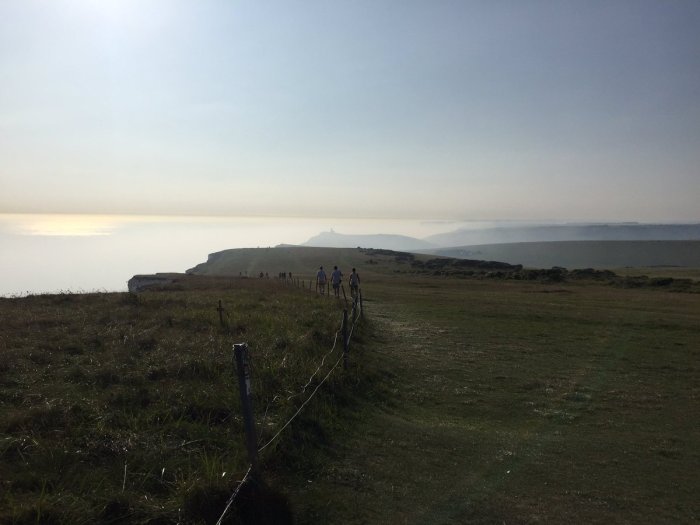








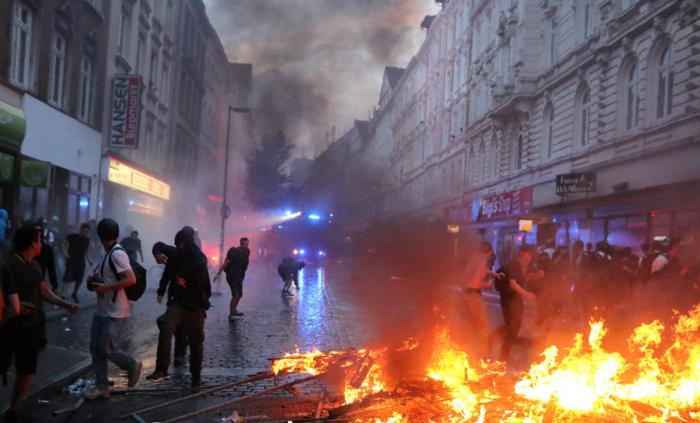
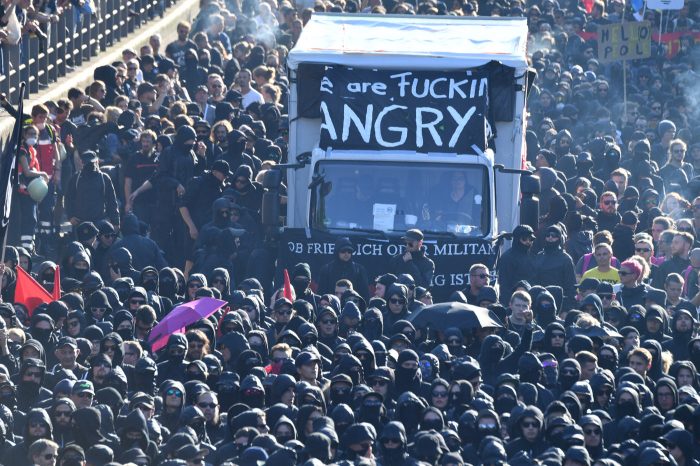
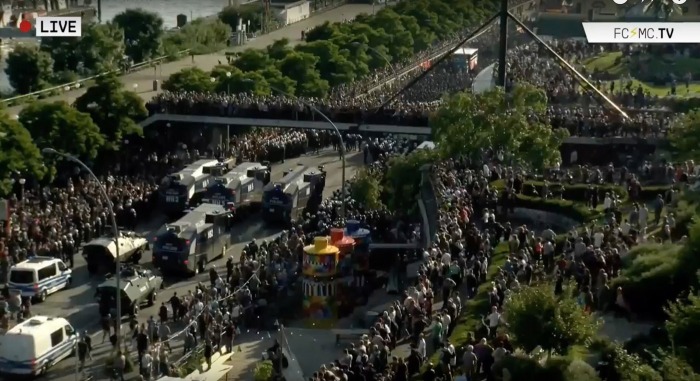




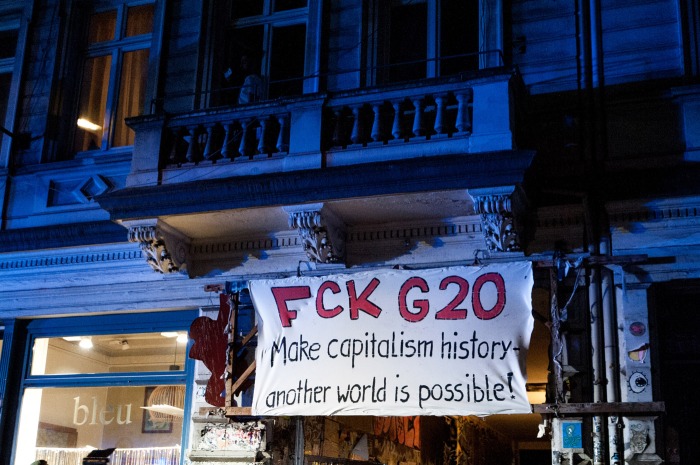
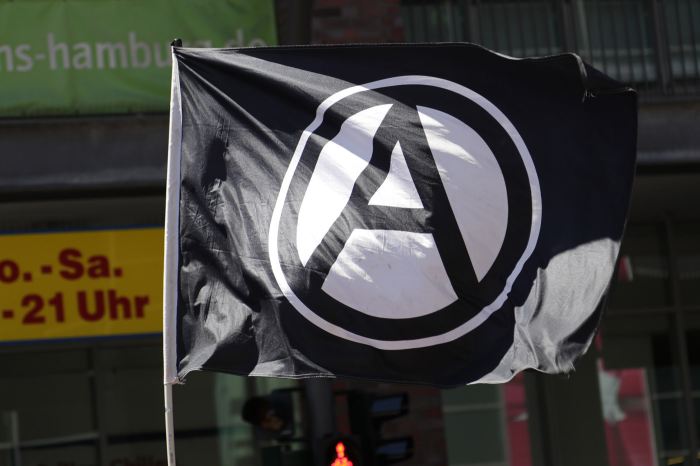



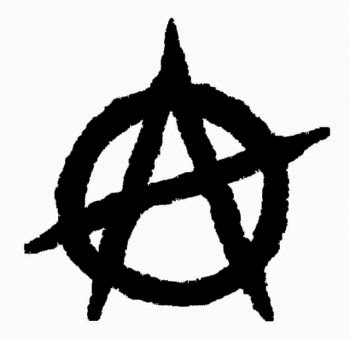




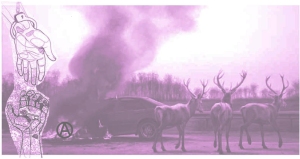





Reblogged this on Wessex Solidarity.
LikeLike